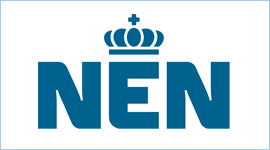Have you ever peacefully driven down the road, when suddenly a huge wall of cars hit you? You quickly try to switch lanes, or you try to take the first turn, however, no matter what you try to do soon you are completely stuck in all the traffic. In recent years, traffic congestion has become a major problem in cities due to the booming concentration of population and activities in urban areas. Today, 55% of the world’s population lives in urban areas and this number is expected to reach 65% by 2050 (United Nations, 2018). Navigating through the maze of traffic congestion is for many people one of life’s biggest headaches, unless you use the ‘Waze’ application.

Waze is a free, real-time, crowdsourced traffic- and navigation application empowered by word’s largest community of drivers. By using GPS navigation software, Waze calculates routes to help drivers navigate to their destination, warns about potential traffic congestion on the road and suggests the optimal, shortest or fastest routes to this destination (Harburn, 2016). Furthermore, Waze enables users to alert each other about road situations, accidents, police control or other route details (Parr, 2009). On top of that, Waze gathers real-time data from its users (drivers in this case) to monitor and relay traffic information for its maps in more than 185 countries around the globe. This data is collected from the crowd in three ways: 1) users actively report on live events that occur on the road; 2) users passively relay information about driving speed and traffic conditions when they actively make us of Waze, or when the app is open in the background of their mobile device; 3) Waze contains a network with volunteers who continuously edit the maps that is used in the app (Muller, 2018). By doing so, Waze collects the most accurate and latest information from drivers who are currently on the road and helps other drivers of the community to save time for being stuck in traffic jam, money spend on gasoline (Harburn, 2016) as well as it may save you a fine.
Although Waze may sound as a promising solution for the rapidly increasing population and traffic in urban areas, we should also critically ask ourselves about potential risks or downsides that may occur. Since Waze redirects drivers to avoid traffic jams or cut travel times, they often suggest more dangerous alternative side roads. Can Waze be held responsible if accidents or dangerous traffic situations happen when drivers use the Waze application? Also, as Waze subtracts large amount of data from its users around the globe, we have to think about the consequences of Waze’ data collection. What can be the impact of gathering so much data (e.g. driver, drive style etc.) on our privacy and the law? Moreover, what could be the consequences if Waze misuses the data?
Sources:
Muller, K. (2018). How crowdsourcing is changing the waze we drive. Digital HBS. [Online] Available at:https://digital.hbs.edu/platform-rctom/submission/how-crowdsourcing-is-changing-the-waze-we-drive/
Parr, B. (2009). Waze Uses Crowdsourcing to Bring You Real-Time Traffic Info. Mashable. [Online] Available at: https://mashable.com/2009/05/18/waze/?europe=true
Harburn, L. (2016). One of the best waze to use crowdsourcing. Social Media for Business Performance. [Online] Available at: http://smbp.uwaterloo.ca/2016/06/one-of-the-best-waze-to-use-crowdsourcing/
United Nations. (2018). 68% of the world population projected to live in urban areas by 2050, says UN. United Nations. [Online] Retrieved from: https://www.un.org/development/desa/en/news/population/2018-revision-of-world-urbanization-prospects.html

